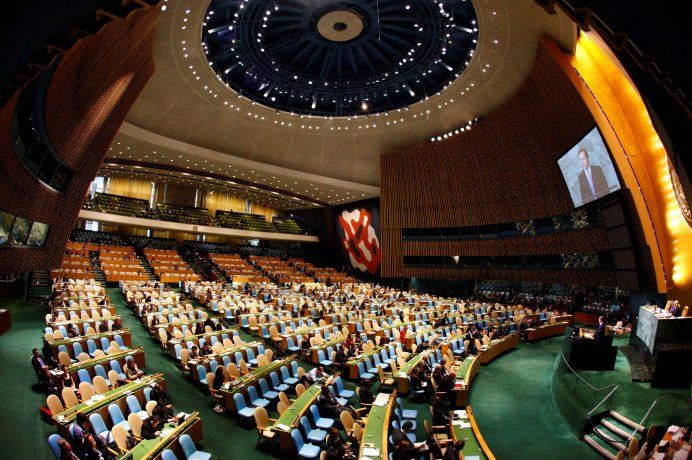According to the latest report from the five agencies of the United Nations Organization (UN)hunger affects 733 million peoplemore than 9% of the world’s populationWars, economic difficulties and extreme weather events were the main causes that prevented the decline of this problem.
In addition, the international organization detailed that the situation is not the same throughout the world. For example, in the last year, the famine increased in Africastabilized in Asia and decreased in Latin America and the Caribbean.
The UN report
According to the research data, Africa remains the region with the highest percentage of population facing hungerwith a 20.4%. In Asia it is 8.1%, in Oceania 7.3% and in Latin America and the Caribbean 6.2%.
Ukraine Russia
The war between Russia and Ukraine, which began in 2022, is cited as one of the main factors behind the worsening of hunger in the world.
REUTERS
The findings were set out in a joint report by five agencies of the international organization; the Food and Agriculture Organization of the United Nations (FAO), the International Fund for Agricultural Development (IFAD), the United Nations Children’s Fund (UNICEF), the World Food Programme and the World Health Organization (WHO).
The situation worsened with Covid-19 in 2020 and 2021. Since then, the proportion of the population that does not have enough calories to lead a normal life remained at the same level. With this trend, the international agency sees it becoming increasingly difficult to achieve the goal adopted nine years ago to eliminate world hunger by 2030.
In total, about 2.33 billion people suffered from food insecurity moderate or severe in 2023, meaning they had to skip a meal from time to time. In addition, more than a third of the world’s population cannot access a healthy diet, 72% of them in low-income countries.
Funding against hunger
According to current estimates made by the UN They emphasize that, theoretically, there is a need for between US$176 billion and US$3.975 trillion to eradicate hunger by 2030. Food and nutrition security “is not just about distributing bags of rice in emergency situations,” he stressed. David Laborde, FAO economist and one of the co-authors of the report entitled “The State of Food Security and Nutrition in the World.”
The eradication of famine does not only involve collecting food, but also highlights the importance of helping small farmers to work the land or enabling a rural area to have enough electricity for its irrigation systemLaborde explained. The report also focuses on the role of donors, international agencies, NGOs and foundations, which must also “coordinate better“, to achieve the goal.
un united nations general assembly

In 2015, the UN set a goal of ending hunger by 2030.
Reuters
“The current financing architecture (…) is highly fragmented“and there is a “lack of consensus around what should be financed,” Laborde lamented. “The consequence of this is a large amount of small uncoordinated relief activities“the economist explained. Another weak point of the current system is that the intentions of donors do not necessarily correspond to the needs of local populationsthe agencies detailed in the report.
Finally, the document also invited develop financial instruments that combine public and private funds to encourage private actors to invest in food security, a source of productivity and political stability, while limiting their risks.There is no time to waste, as the cost of inaction far exceeds the cost of the actions recommended in this report.“, the document concludes.
Source: Ambito




